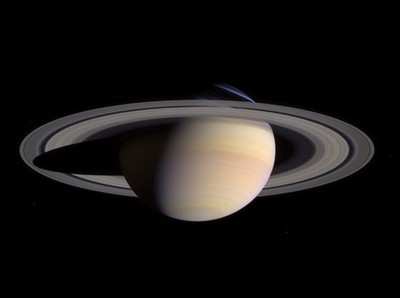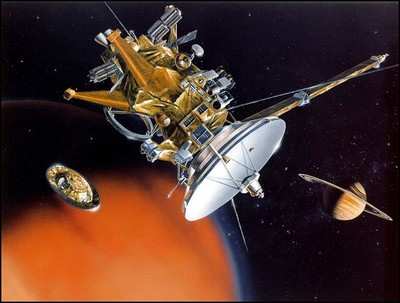And You Should See The Pictures!
The first pictures taken by the Cassini spacecraft after it
began orbiting Saturn show breathtaking detail of Saturn's rings,
and other science measurements reveal that Saturn's magnetic field
pulsed in size as Cassini approached the planet.
"For years, we've dreamed about getting pictures like this.
After all the planning, waiting and worrying, just seeing these
first images makes it all worthwhile," said Dr. Charles Elachi,
Cassini radar team leader and director of NASA's Jet Propulsion
Laboratory, Pasadena (CA). "We're eager to share these new views
and the exciting discoveries ahead with people around the
world."
The narrow angle camera on Cassini took 61 images soon after the
main engine burn that put Cassini into orbit on Wednesday night.
The spacecraft was hurtling at 15 kilometers per second (about
34,000 miles per hour), so only pieces of the rings were
targeted.
"We won't see the whole puzzle, only pieces, but what we are
seeing is dramatic," said Dr. Carolyn Porco, Cassini imaging team
leader, Space Science Institute, Boulder (CO). "The images are
mind-boggling, just mind-boggling. I've been working on this
mission for 14 years and I shouldn't be surprised, but it is
remarkable how startling it is to see these images for the first
time."

Some images show patterned density waves in the rings,
resembling stripes of varying width. Another shows a ring's
scalloped edge. "We do not see individual particles but a
collection of particles, like a traffic jam on a highway," Porco
said. "We see a bunch of particles together, then it clears up,
then there's traffic again."
Other instruments on Cassini besides the camera have also been
busy collecting data. The magnetospheric imaging instrument took
the first image of Saturn's magnetosphere. "With Voyager we
inferred what it looked like, in the same way that a blind man
feels an elephant. Now we can see the elephant," said Dr. Tom
Krimigis of Johns Hopkins Applied Physics Laboratory, Laurel (MD),
principal investigator for the magnetospheric imaging instrument.
The magnetosphere is a bubble of energetic particles around the
planet shaped by Saturn's magnetic field and surrounded by the
solar wind of particles speeding outward from the Sun.

"During approach to Saturn, Cassini was greeted at the gate,"
said Dr. Bill Kurth, deputy principal investigator for the radio
and plasma wave science instrument onboard Cassini. "The bow shock
where the solar wind piles into the planet's magnetosphere was
encountered earlier than expected. It was as if Saturn's county
line had been redrawn, and that was a surprise." Cassini first
crossed the bow shock about 3 million kilometers (1.9 million
miles) from Saturn, which is about 50 percent farther from the
planet than had been detected by the Pioneer, Voyager 1 and Voyager
2 spacecraft that flew past Saturn in 1979, 1980 and 1981.
The location of the bow shock varies with how hard the solar
wind is blowing, Kurth said. As the magnetosphere repeatedly
expanded and contracted while Cassini was approaching Saturn, the
spacecraft crossed the bow shock seven times.
 NTSB Final Report: Cozy Cub
NTSB Final Report: Cozy Cub ANN FAQ: Contributing To Aero-TV
ANN FAQ: Contributing To Aero-TV Classic Aero-TV: Seated On The Edge Of Forever -- A PPC's Bird's Eye View
Classic Aero-TV: Seated On The Edge Of Forever -- A PPC's Bird's Eye View ANN's Daily Aero-Linx (04.29.25)
ANN's Daily Aero-Linx (04.29.25) ANN's Daily Aero-Term (04.29.25): Execute Missed Approach
ANN's Daily Aero-Term (04.29.25): Execute Missed Approach




